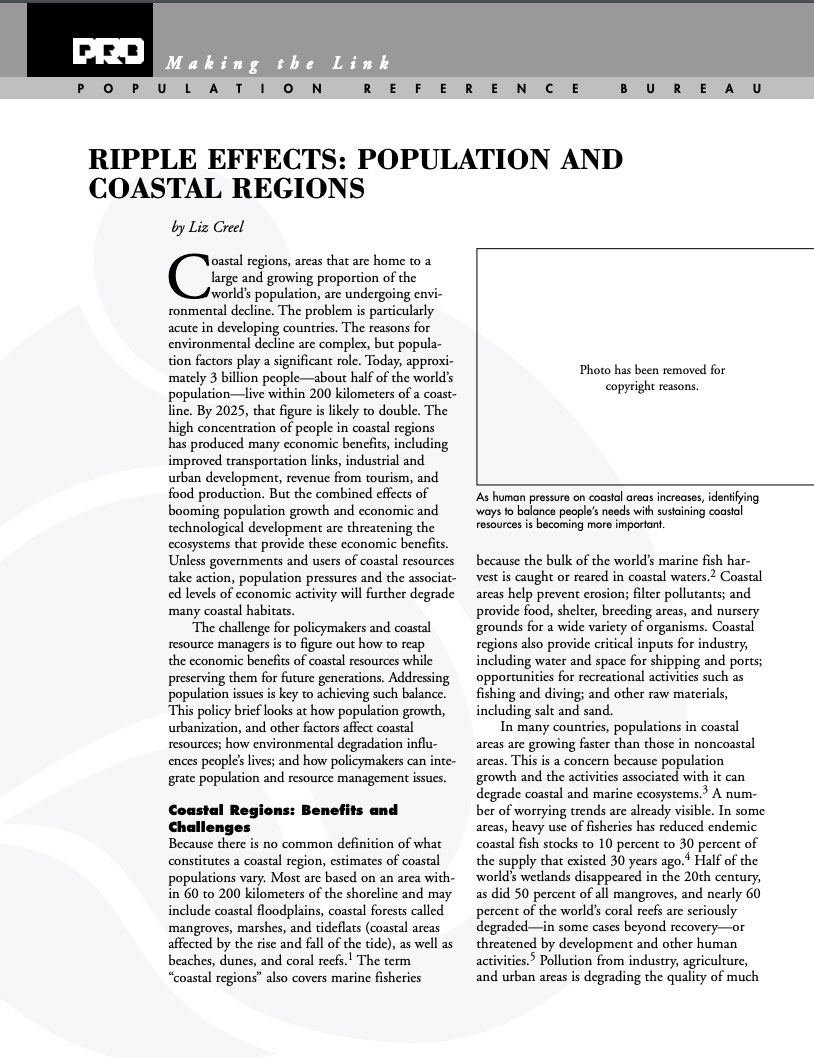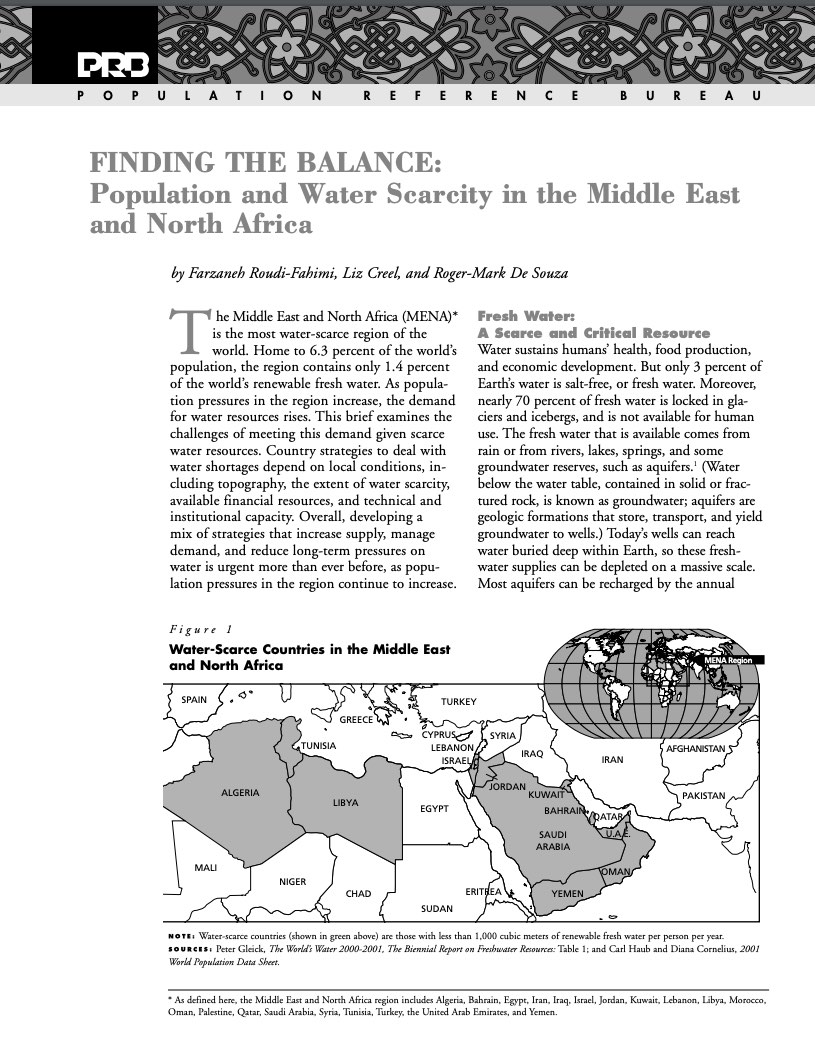Report. Ripple Effects: Population and Coastal Regions
(2003) Coastal regions, areas that are home to a large and growing proportion of the world's population, are undergoing environmental decline.

(2003) Coastal regions, areas that are home to a large and growing proportion of the world's population, are undergoing environmental decline.

(2002) The Middle East and North Africa (MENA)* is the most water-scarce region of the world. Home to 6.3 percent of the world's population, the region contains only 1.4 percent of the world's renewable fresh water.
(2011) In her new book, The Future Faces of War: Population and National Security, author Jennifer Dabbs Sciubba argues that the future of warfare will be shaped by demographic trends in fertility, mortality, and migration.
(2006) Still, at least one research and policy dimension remains little explored: The relationship between HIV/AIDS and the natural environment. HIV/AIDS is shaping society's impact on the natural environment in myriad ways and at many levels.
(2008) Recent demographic trends have created a youth bulge in the Middle East and North Africa, with nearly one in every five people age 15 to 24. Despite its oil wealth and improved health and education systems, the region's political, social, and economic systems still do not meet the needs of this rapidly growing young population.
Project: IDEA: Informing Decisionmakers to Act
(2014) News reporting in the past year by PRB's Women's Edition participants has been instrumental in exposing violence against women to authorities in Kenya and Pakistan and forging a path to justice for women who were raped.

PRB analyzes the demographic and socioeconomic patterns in the 13-state region.